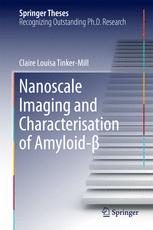

Most ebook files are in PDF format, so you can easily read them using various software such as Foxit Reader or directly on the Google Chrome browser.
Some ebook files are released by publishers in other formats such as .awz, .mobi, .epub, .fb2, etc. You may need to install specific software to read these formats on mobile/PC, such as Calibre.
Please read the tutorial at this link: https://ebookbell.com/faq
We offer FREE conversion to the popular formats you request; however, this may take some time. Therefore, right after payment, please email us, and we will try to provide the service as quickly as possible.
For some exceptional file formats or broken links (if any), please refrain from opening any disputes. Instead, email us first, and we will try to assist within a maximum of 6 hours.
EbookBell Team

4.8
54 reviewsThis thesis presents a method for reliably and robustly producing samples of amyloid-β (Aβ) by capturing them at various stages of aggregation, as well as the results of subsequent imaging with various atomic force microscopy (AFM) methods, all of which add value to the data gathered by collecting information on the peptide’s nanomechanical, elastic, thermal or spectroscopical properties.
Amyloid-β (Aβ) undergoes a hierarchy of aggregation following a structural transition, making it an ideal subject of study using scanning probe microscopy (SPM), dynamic light scattering (DLS) and other physical techniques. By imaging samples of Aβ with Ultrasonic Force Microscopy, a detailed substructure to the morphology is revealed, which correlates well with the most advanced cryo-EM work. Early stage work in the area of thermal and spectroscopical AFM is also presented, and indicates the promise these techniques may hold for imaging sensitive and complex biological materials. This thesis demonstrates that physical techniques can be highly complementary when studying the aggregation of amyloid peptides, and allow the detection of subtle differences in their aggregation processes.